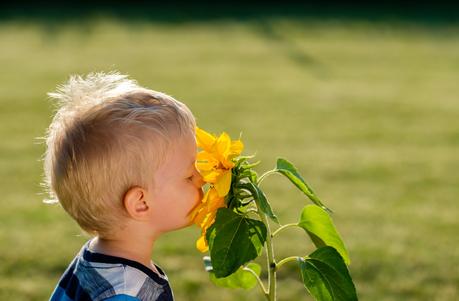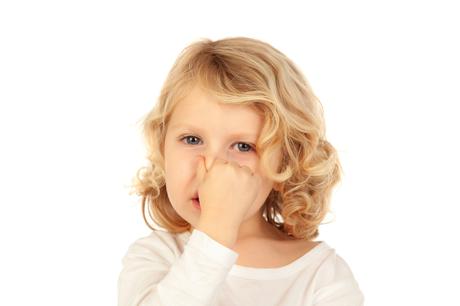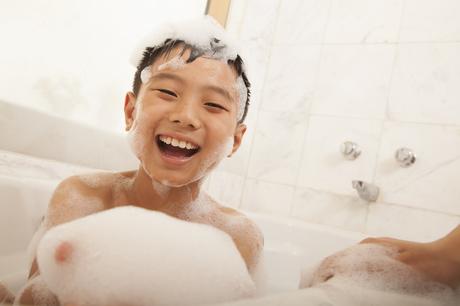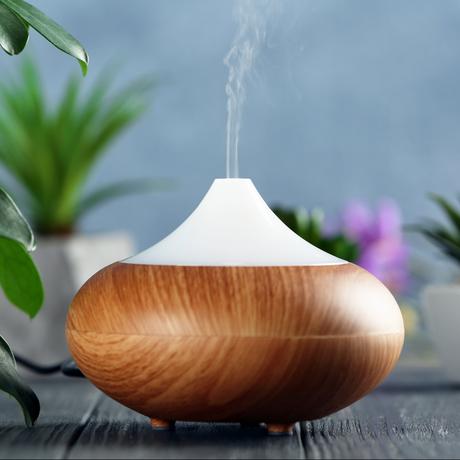
Essential Oils can be a great resource to help kids that struggle with sensory issues or that have a sensory processing disorder. While we're starting to hear more about sensory processing disorders, or SPDs, most of us still are confused - or overwhelmed - by the term.
What is Sensory Processing?
Sensory processing is simply (1) the brain's ability to process information from the senses and (2) then use that information to make connections to the world around it. Individuals with SPDs have abnormal responses to sensory information and have difficulty processing and organizing that information. This abnormal response to sensory input can cause individuals to be over sensitive, under sensitive or both.
I first learned about SPDs a few months ago when my son was diagnosed with one. What I thought was picky eating and dramatics at the dinner table was an oversensitivity to smells and tastes. For him, this presents as strong aversions to smells and foods causing him to gag (and sometimes vomit) when he is exposed to certain things. Further, it causes a lot of anxiety for him at meal times and other times that he's exposed to potent smells. For the most part, eating is stressful and unpleasant for him.
In many ways, it was a relief to get this diagnosis because it opened up a number of resources to help him with these issues. His pediatrician referred us to an occupational therapist and recommended that we begin using essential oils with him. She suggested that I try putting a drop of lavender either on his feet or under his nose to help increase his tolerance to smells.
While he was unhappy and a little confused by this at first, after a couple of times he started to like it. (Note: he only liked it on his feet, he has no patience for having it above his upper lip). Desperate to help him and encouraged by this success, I began doing some research to better understand why essential oils help kids that have an SPD and how I could use them more.
 Oils are Helpful for Children with Sensory Disorders
Oils are Helpful for Children with Sensory Disorders

Anyone that has a child with sensory issues knows the anxiety symptoms it causes. Essential oils reduce this anxiety with their well-known calming effect. In the case of my son and others, essential oils also increase tolerance for new and different scents.
There are many different oils that you can choose from that are beneficial, and the process involves some trial and error to find the right fit for your child. That said, there are a few that are especially helpful for sensory issues and a good place to start:
- Lavender - helpful for reducing anxiety; helps kids relax and has a calming smell
- Neroli - has a calming effect on kids
- Peppermint (only kids over 6) - helps with focus; has an especially potent smell
- Geranium - has a calming effect on kids
- Sandalwood - helps with focus; has a calming effect on children
How to Start Using Essential Oils
For us, it worked best to start small and to expose him to oils in noninvasive ways. Here are some ways that I've started to do it:
Aromatically in Play
There are some easy ways to make essential oils a part of playtime - often without kids even knowing that it's happening. One fun way is to make homemade play-doh or slime using essential oils. Play-doh is very popular at our house, so this is an easy and low-stress way to expose my son to essential oils on a regular basis.
TIP #1: Work essential oils into playtime by making slime or play-doh with them.
As a Part of Bath Time
Bath time is already a calming experience for my son but adding essential oils to bath bombs and bubble baths has made this an even more valuable part of the day. These are fun to make and a great addition to your daily routine. Both of my kids love making these and adding them to their bath!

TIP #2: Make bath bombs or bubble bath using essential oils so that kids are exposed to them during bath time.
In Smelling Bottles as a Fun Activity
Smelling bottles are a great way to get kids to actively engage with essential oils. This activity is especially beneficial for kids that have olfactory issues or aversions to new or potent scents.
This is my favorite way to use essential oils because it gives my son the opportunity to engage with different scents in a low-stress environment. Doing this makes it easier for him to work through and manage his response to new scents.
There are lots of ways to do this activity, but here's an easy one:
- Start with empty spice bottles
- Place a cotton ball in each spice bottle
- Put different essential oils on each cotton ball
- Put the top on the container and let kids smell through the open holes
For younger kids, it might be helpful to put a label on each container. Older kids will have fun guessing what the smell is and creating their own label. Make this into a fun game and keep adding variety to keep kids interested. (I very slowly added variety so as not to make this stressful or overwhelming for my son).
TIP #3: Make smelling bottles with essential oils and make it a game for kids to guess what they're smelling.
Through a Diffuser
Once kids have been exposed to essential oils a bit, consider using them in a diffuser. This can feel overwhelming to some kids - mine included - so start slowly and simply. Here are a few tips for success with this:
- Begin with a scent your child is already comfortable with. For example, if they're used to using lavender in a bath bomb, start by diffusing that.
- Only diffuse one type of oil for a while and slowly add others.
- Start by diffusing oils for a short period of time. The first time you use a diffuser, only do it for five minutes.
- Gradually build up the amount of time kids are exposed to diffused oils as they become more comfortable with it.

Use a diffuser to expose kids to essential oils. Start small - only diffusing for about five minutes - and gradually build up to around 20 minutes as kids become more comfortable with it.
Topically
Try applying essential oils topically to the bottom of kids' feet. Before using, confirm that the essential oil and concentration that you are using are safe for your child. For smaller children, make sure you're using a dilution of .25%.
Consider massaging kids' feet a bit after application to make this an especially calming experience. For some kids, a drop applied to the upper lip can be helpful. However, start small with this and only with the most gentile oils - lavender is a good one to start with. (Our pediatrician encouraged this. It was a disaster, so we're sticking to the feet!)
TIP #5: Apply essential oils topically, starting with the bottom of your child's feet. For kids with higher olfactory needs, considering applying appropriate essential oils to their upper lip.
In Conclusion
Essential oils have been helpful for my son and his SPD. While all kids react differently to new things, essential oils can be a great resource to help support kids with unique sensory needs. I hope you'll experiment with some of the tips above and that they'll provide some support for you and your family. Let us know what you have success with. Good luck!

